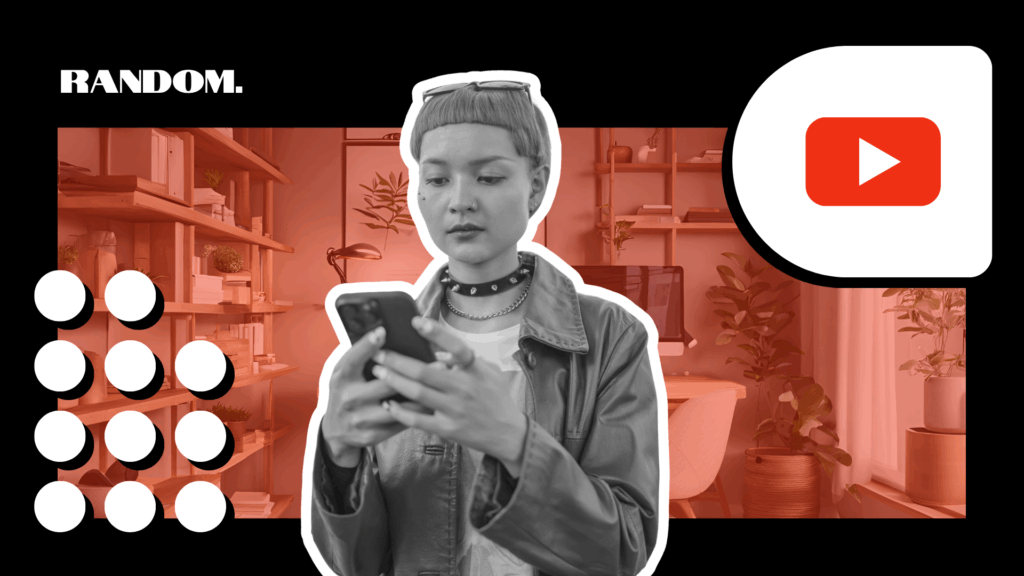
Gen Z is not just another age group. They are the first generation raised in a fully digital environment, where YouTube, social media, and gaming are as familiar to them as TV and movies were to earlier generations. They do not simply consume content; they create, remix, and share it as a form of identity and community building.
The YouTube Next Gen Report reveals that young audiences are active cultural participants. Their digital literacy makes them not only savvy consumers but also influential creators. This shift has given rise to a new creative language known as Creative Maximalism, a visually complex, deeply referential, and global style.
This new language presents both a challenge and an opportunity for brands. To connect with Gen Z, brands need to understand their cultural codes, habits, and expectations of media.
Traditional media is losing ground with young people. Deloitte reports that Gen Z spends 26 percent less time watching TV and movies than the average person while spending 54 percent more time on social platforms and with user-generated content. That equals almost an extra hour per day spent with UGC.
Why? Traditional media does not reflect their world. Research shows that less than one-third of teens feel TV and movies depict their lives, including school, family, gaming, and online communities. So, they have turned to YouTube, TikTok, and social platforms, where content created by their peers is more authentic and relatable.
This shift means that brand stories told in traditional formats often feel out of touch. To stay relevant, brands must enter the spaces where young people spend their time and embrace the creative styles that resonate there.
Gen Z has grown up with dense digital interfaces like video game HUDs and anime visuals. They are used to processing multiple layers of information at once. This shows up in content filled with fast edits, on-screen text, emoji overlays, and various narratives in a single frame.
For brands, this means traditional “clean and simple” creative may not grab attention. Instead, when done authentically, maximalist visuals can feel native and engaging. The NFL, for example, has leaned into this aesthetic with chaotic but captivating schedule release videos.
Gen Z does not just watch stories; they expand them. Whether through fan art, community lore, or remix videos, audiences see themselves as co-owners of the content. EPIC: The Musical is a perfect example, growing from a single creator’s project into a global phenomenon with fans contributing animations, music videos, and theories.
Brands that leave room for fan participation through challenges, remixable formats, or open storytelling stand to build deeper connections and longer-lasting engagement.
Inside jokes, memes, and cultural references are the glue of online communities. The more references a viewer understands, the more they feel they belong. From cat memes evolving into a whole cinematic universe to viral gaming dances, referential content signals cultural fluency.
For marketers, this means memes and cultural callbacks are not optional fluff. They are core to how Gen Z communicates. The key is authenticity. A brand that fakes fluency risks alienating its audience, while one that genuinely participates can earn trust and attention.
Gen Z grew up with the entire world’s entertainment available on demand. A Korean animation, a Brazilian music remix, or a French lo-fi meme can be just as influential as a Hollywood blockbuster. Auto-translated captions and global fandoms mean cultural borders no longer apply.
Brands that stick only to local trends risk missing out. By experimenting with non-local content, sounds, or collaborations, brands can demonstrate cultural openness and appeal to Gen Z’s global mindset.
Creative Maximalism is not a fad. Major brands and cultural institutions are already adopting it. Snack brands like Nutter Butter are experimenting with chaotic, referential social posts. The NFL is producing maximalist videos. Even Hollywood is scouting YouTube-born franchises like Skibidi Toilet.
More importantly, generative AI makes it easier for young people to create visually complex and referential content. The rise of Italian Brain Rot, with over 450,000 uploads in 2025, shows how AI and Gen Z creativity are coming together.
For brands, the future is clear. Polished perfection is out. Participatory, layered, and culturally fluent storytelling is in.
Gen Z lives online. Your campaigns should start with platforms like YouTube and TikTok, not be repurposed for them.
Try bold visuals, layered edits, and referential content. The aim is not to overwhelm, but to speak in a visual language that feels native to young audiences.
Open the door for fan involvement. Whether through remixable formats, UGC campaigns, or open-ended stories, co-creation helps your audience feel ownership.
Memes, slang, and in-jokes are part of Gen Z’s identity. But you cannot fake it. Commit to understanding the culture behind the references you use.
At their core, young people still want identity, community, and representation. Brands that align with these motivations will connect most deeply.
Before diving in, here are practical steps to get started:
Creative Maximalism is here to stay. At That RANDOM Agency, we help brands move beyond traditional campaigns into storytelling that thrives in a participatory, internet-first world.
If you are ready to embrace maximalism, create co-creation opportunities, and speak Gen Z’s language authentically, reach out to our team. Together, we will ensure your brand is keeping up and leading the conversation. Contact us today!